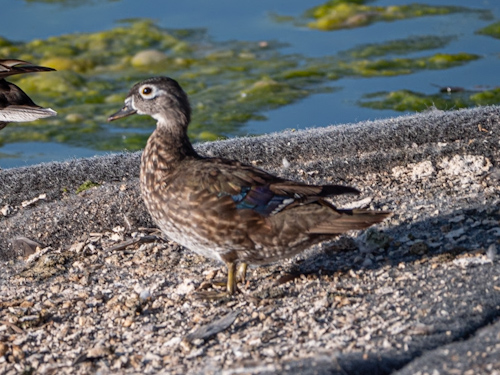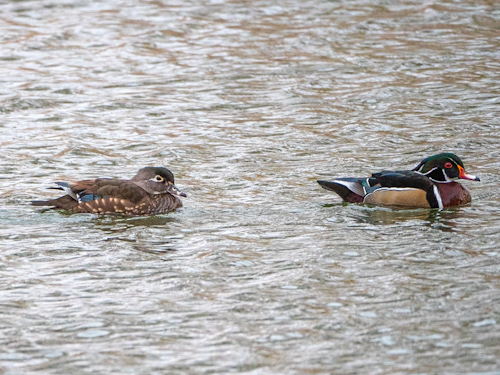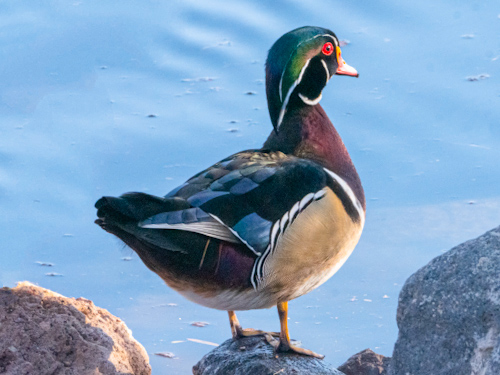
Common Names: Wood Duck, Carolina Duck
Order/Family: Anseriformes (Waterfowl)/Anatidae (Ducks, Geese, Swans)
The adult male has stunning multicolored iridescent plumage and red eyes, with a distinctive white flare down the neck. The female, less colorful, has a white eye-ring and a whitish throat. Both adults have crested heads. The speculum is iridescent blue-green with a white border on the trailing edge. It is about three-quarters the length of an adult mallard. It shares its genus with the Asian mandarin duck (Aix galericulata).
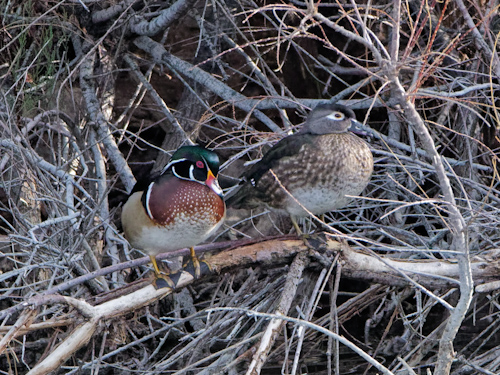
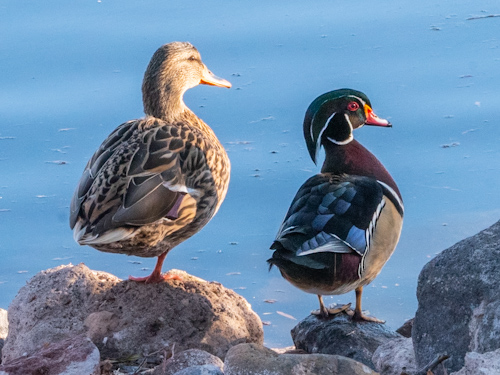
The wood duck is a medium-sized perching duck. Unlike most other ducks, the wood duck has sharp claws for perching in trees. This surprising behavior means you must check above the waterline in the bushes when looking for them. Wood ducks are year-round residents in southern Nevada at Floyd Lamb and Henderson Bird Viewing Preserve. They are shy though and you will not always see them. The northern populations migrate south to Mexico. 75% of the wood ducks in the Pacific Flyway are non-migratory.
Wood ducks feed by dabbling (feeding from the surface rather than diving underwater) or grazing on land. They mainly eat berries, acorns, and seeds, but also insects, making them omnivores. They are able to crush acorns after swallowing them within their gizzard.
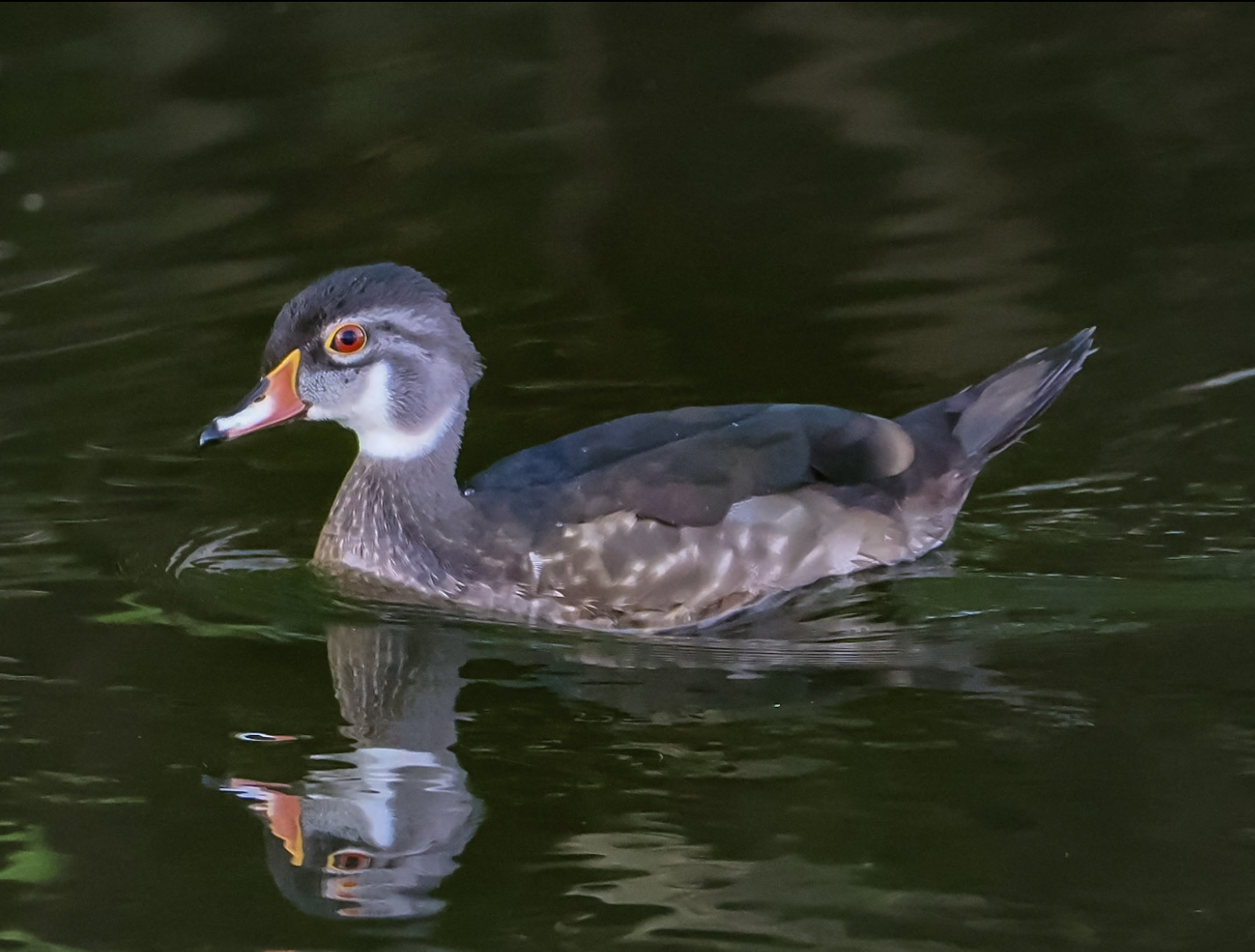
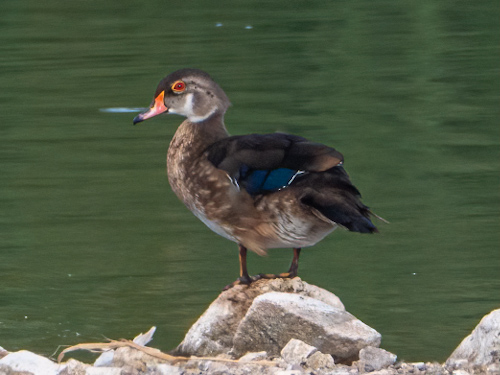
By late summer, a male Wood Duck’s need for fancy feathers to attract the females has passed. Wood ducks molt all their feathers at once including flight feathers, meaning they are flightless for a month or more. The resulting dull brown feathers are known as eclipse plumage, meaning the subdued brown colors eclipse the usual brightly colored feathers. You can tell this is a male, and not a juvenile or female which look alike, by seeing the colorful, well defined bill and red eye.
